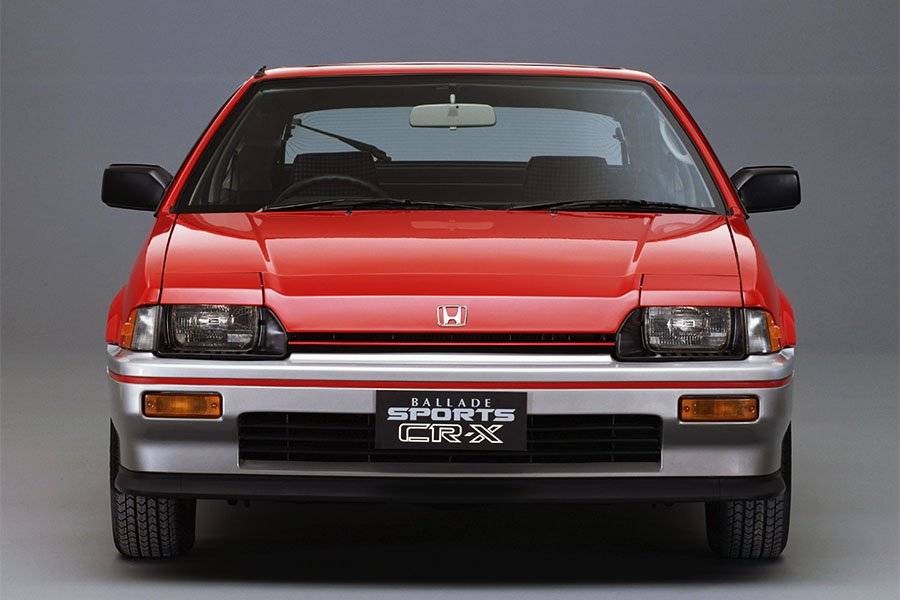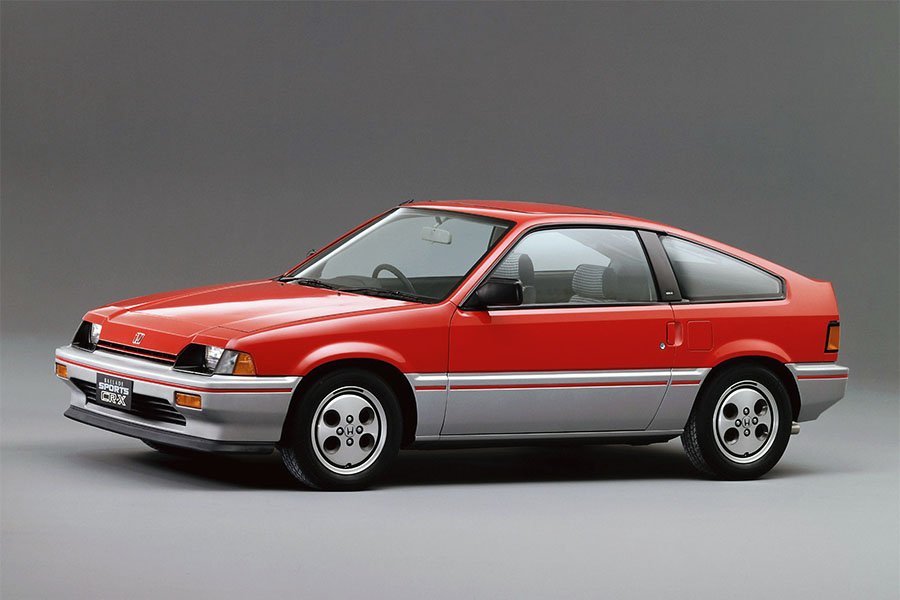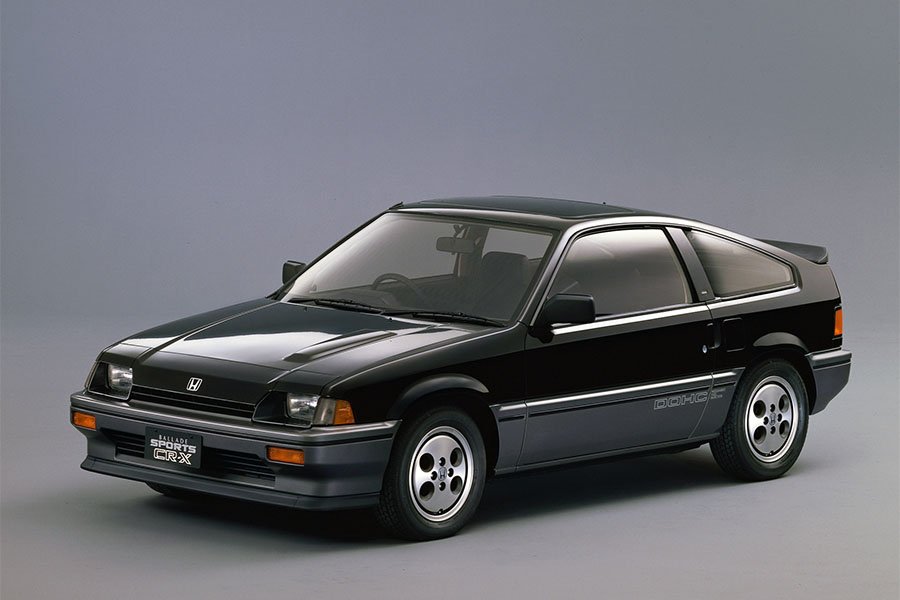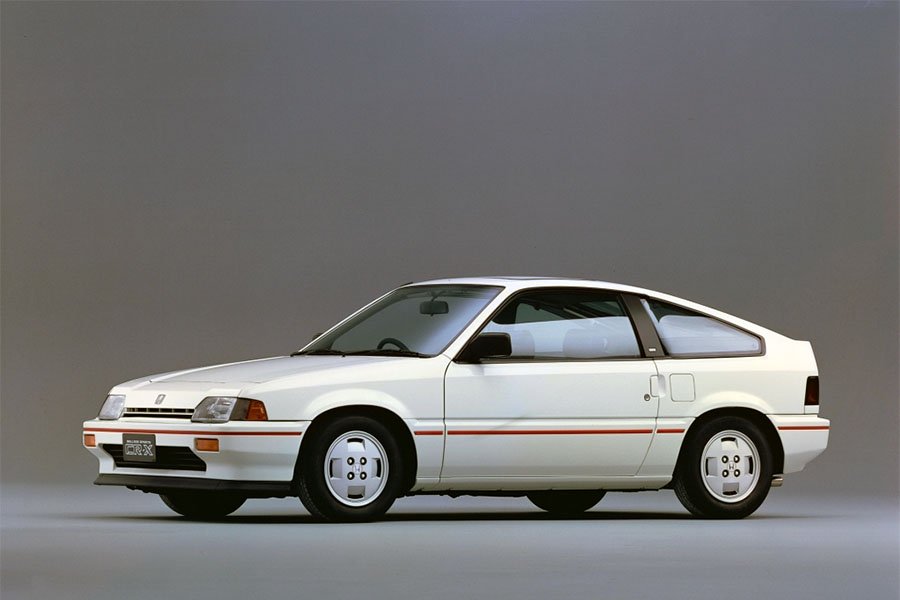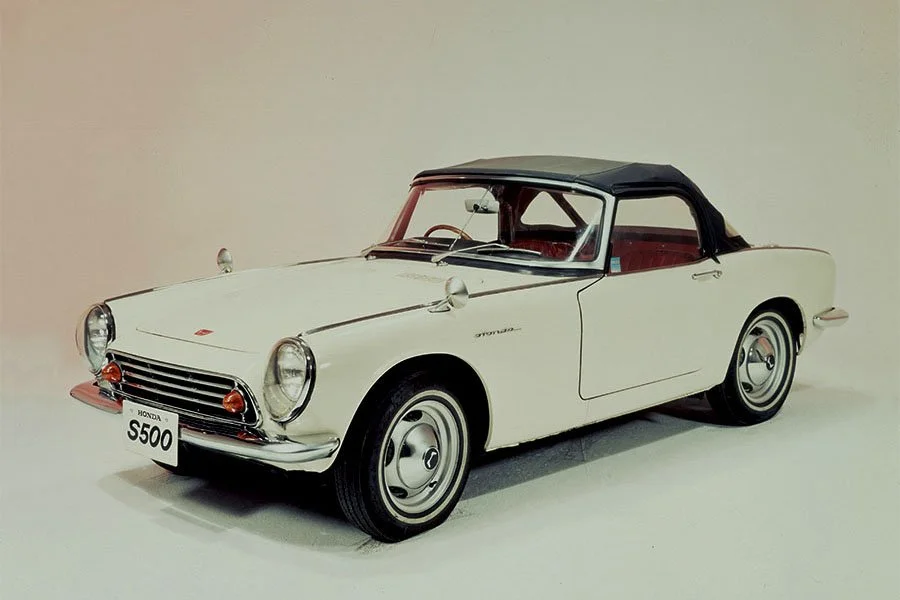Guide: A Bright, Brief Era for the Sport Hatch - a Historical & Technical Appraisal of the Honda CRX I
/BACKGROUND
Having become a leading manufacturer of motorcycles during the 1950s, Honda moved into automobile production with the T360 micro truck in June 1963. The T360 was followed by the two-seat S500 Roadster in October ‘63 which later morphed into the S600 (March ‘64) and S800 (October ‘65).
Unfortunately, sales were slow and at the end of 1968 Honda decided to abandon the F1 and F2 programmes that had been conceived to publicise their fledgling road car division. To save more cash, even Honda’s Grand Prix motorcycle activities were stopped.
It wasn’t until the first generation Civic arrived in 1972 that Honda had its first significant commercial success as a car builder. The Civic was so important that, if it had failed, Honda would likely have had to give up its plan of becoming a fully-fledged car maker.
As it transpired, the Civic sold in vast numbers around the world, in part as a result of the 1973-1974 Oil Crisis that led to surging demand for small fuel-efficient cars.
A second generation Civic was launched in June 1979 and continued where its predecessor had left off.
The third generation Civic was pencilled in for a September 1983 launch. As before, it would be offered with a variety of body styles and engines.
With their fortunes turned around, Honda returned to Grand Prix motorcycle racing in 1979. In 1980, the company began an F2 engine supply deal that yielded a trio of championships in 1981, 1983 and 1984. Buoyed by their achievements, the Japanese company re-entered Formula 1 as an engine supplier.
Despite this considerable recent motor racing success, because the S500, S600 and S800 had proven a commercial disappointment, Honda had not offered another sporty car for well over a decade.
However, three months before the Mk3 Civic arrived, Honda took the wraps off an exciting two-seat Sports Hatchback dubbed the CRX.
Unveiled in June 1983, the CRX was initially offered with a 1.3-litre carb-fed four cylinder engine and a fuel-injected 1.5.
Although originally created for the Japanese Domestic Market (JDM) where it was marketed as the Ballade Sports CR-X, interest from Honda’s international distributors was sufficient that the new model (dubbed CRX for export) was soon on sale in most major markets.
CHASSIS
To keep costs down, the CRX used as many parts from the forthcoming third generation Civic as possible. This included a shortened version of the new car’s pressed steel floorpan with a 2200mm wheelbase (instead of 2380mm).
A front-wheel drive configuration was retained and there was no power steering.
New SPORTEC front suspension comprised MacPherson struts and longitudinal torsion bars instead of coil springs. An anti-roll bar was also fitted up front.
At the rear, Honda fitted a simple and compact beam axle located by trailing links and a Panhard rod. Coil springs were retained at the rear and tubular shock absorbers were fitted all round.
The flagship 1.5i came with stiffened suspension and a rear anti-roll bar integrated within the beam axle
Brakes were servo-assisted 231mm discs at the front (ventilated on the 1.5i) and drums at the back.
5 x 13-inch wheels came in two styles: twelve-hole steel rims on the 1.3 and four-hole alloys on the 1.5i.
The 1.5i also came with slightly wider tyres: 175/70 as opposed to 165/70.
Unlike the third generation Civic (which used a 45-litre fuel tank), a smaller 41-litre tank was fitted to the CRX.
ENGINE / TRANSMISSION
Honda offered a choice of two naturally aspirated transversely-mounted inline four cylinder engines. Both featured an all-alloy construction with belt-driven single overhead camshaft.
Compared to previous generation Civic motors, these latest power units had been extensively redesigned to incorporate conjoined cylinder bores and a shorter, lighter block. They also came with and the latest 12-valve crossflow edition of Honda’s Compound Vortex Controlled Combustion system (CVCC II) with two intake and one exhaust valve per cylinder.
The base model 1.3-litre EV engine displaced 1342cc thanks to a bore and stroke of 74mm and 78mm respectively. It had a single carburettor and 10.0:1 compression ratio. Peak output was 79bhp at 6000rpm and 81lb-ft at 6000rpm.
The flagship 1.5i EW engine came with a longer 86.5mm stroke which yielded an additional 146cc (1488cc). The other notable difference compared to the 1.3 was Honda’s PGM-FI electronic fuel-injection and a twin outlet exhaust system. Compression was lowered to 9.0:1. In this configuration, peak output was 100bhp at 5750rpm and 96lb-ft at 4500rpm.
A five-speed manual gearbox was standard equipment for both the 1.3 and 1.5i variants. The 1.5i could also be configured with an optional three-speed Hondamatic auto with lock-up torque converter and overdrive top gear.
BODYWORK
The CRX’s distinctive bodywork was a mix of steel panels and plastic mouldings.
At the front, partially concealed and recessed headlights came with retractable upper flaps that opened up when in use. Fresh air was fed to the radiator through a wide rectangular intake housed in the front bumper and a slim aperture between the headlights.
Thanks to a small frontal area, low roofline and Kamm tail, the CRX had a very impressive 0.33 drag coefficient. This represented an astonishing 25% reduction compared to the popular Civic Sedan.
A lift-up rear hatch was used to access the generous storage area although the tall height of the tail did not make placing heavy goods in the trunk particularly easy.
Between the single-piece tail lights, Honda fitted a gloss black panel that bore the CRX logo.
The flagship 1.5i came with a retractable roof-mounted scoop that channelled fresh air into a pair of adjustable interior outlets located above the windscreen (an option on the 1.3). The 1.5i also came with satin black deep front spoiler that matched the exterior mirrors and B pillar treatment.
INTERIOR
The cockpit was trimmed with the kind of hard plastic and fabric found in most Japanese cars of this era.
Directly behind the three-spoke steering wheel was an unusual triangular instrument binnacle. Large analogue read outs for road and engine speed were flanked by smaller read outs for water temperature and fuel. In between the tachometer and speedometer was a bank of twelve warning lights. Controls for the ventilation system and a variety of switches were located below the main binnacle, either side of the steering wheel.
Heavily bolstered sports seats were trimmed in two-tone black with black and white chequered fabric.
Door panels were trimmed with the same kind of hard plastic as the dash.
JDM cars were fitted with a folding rear seat described by Honda as a ‘one mile seat’ for emergency use.
Compared to the 1.3, the flagship 1.5i came with a tinted windscreen strip, a quartz clock and electric exterior mirrors.
OPTIONS
Honda initially offered the CRX in a choice of three colour schemes: Victoria Red with a Red and Black interior, Greek White with a Blue interior and Baltic Blue with a Blue interior.
In addition, customers could choose from a variety of optional upgrades to include a sunroof, air-conditioning, electric windows, a trip computer, 14-inch alloy wheels, a rear wiper, a range of audio systems, floor mats and a rear spoiler that was left in its natural rubber state.
Buyers in Japan could select the expensive digital instrumentation option.
WEIGHT / PERFORMANCE
The entry level 1.3-litre CRX weighed in at 760kg. Top speed was 106mph and 0-62mph took 11.8 seconds.
The flagship 1.5i tipped the scales at 800kg. It had a 116mph top speed and 0-62mph time of 8.9 seconds.
Road testers and customers alike praised the car for its handling, build quality, performance and price.
USA VERSION
Soon after production started, Honda began to offer a USA version. These cars lacked the flip-up headlight eyebrows and came with no rear seat.
They also came with Federalised engines. The 1.3-litre EV units bound for the USA used a simpler 8 as opposed 12 valve head. Peak output was 60bhp at 5500rpm (instead of 79bhp at 6000rpm) and 83lb-ft at 3500rpm (instead of 81lb-ft at 6000rpm).
The 1.5-litre CRX built to US specification retained the 12 valve head but came with a single carburettor instead of fuel-injection. Peak output was 76bhp at 5500rpm (down from 100bhp at 5750rpm) and 84lb-ft at 3500rpm (as opposed to 96lb-ft at 4500rpm).
American customers were not able to specify the digital instrument option, roof ventilation hatch, 14-inch wheels or sunroof (although the 14-inch wheels and sunroof would become available later).
EUROPEAN VERSION
Cars bound for Europe retained the JDM front end.
The 1.5i was sold without the catalytic converter and exhaust gas recirculation system used for JDM variants which gave it a little more power.
Euro variants all came with a folding rear seat and sunroof but the automatic gearbox option was not offered.
1984 MODEL YEAR PRODUCTION
Production for the 1984 model year totalled 48,445 units.
1985 MODEL YEAR
For the 1985 model year, the 1.3-litre engine was dropped for export markets.
It was replaced with the new ‘High Fuel’ 1.5-litre HF that featured a super economical carb-fed ED engine. Displacement was the usual 1488cc and compression was 10.0:1. Peak output was 60bhp at 5500rpm and 73lb-ft at 3500rpm.
In total, Honda produced 57,286 examples of the CRX during the 1985 model year.
CRX 1.6 SI
The most exciting news for the 1985 model year was the arrival of the new range-topping CRX Si launched in April ‘85.
At its heart, the Si featured a dual overhead camshaft ZC engine with four valves per cylinder. Larger intake valves and three-way catalysts with feedback fuel and air controls made the original CVCC design redundant. The Si also came with an oil cooler and 4% shorter final drive.
Displacement was 1590cc thanks to a bore and stroke of 75mm and 90mm respectively. This represented a gain of 102cc compared to the 1.5i.
With a 9.3:1 compression ratio and Honda PGM-Fi fuel-injection, the Si pumped out 133bhp at 6500rpm and 112lb-ft at 5000rpm.
A five-speed manual gearbox was standard and the three-speed automatic was optional.
The CRX Si’s suspension was re-tuned to reflect the additional 62kg it carried compared to the 1.5i. Also, a countershaft with an additional universal joint was added to the transaxle that enabled the installation of almost equal length halfshafts to reduce torque steer.
Externally, the Si could be identified on account of its special rear lip spoiler, DOHC decals ahead of the rear wheels and a power bulge in the hood that was necessary to accommodate the new engine’s cam pulleys.
Previously optional equipment bundled in as standard included an electric sunroof, electric mirrors and a rear wiper.
The Si weighed 895kg, had a top speed of 126mph and 0-62mph time of 8 seconds.
USA VERSION (CRX 1.5 S)
Unfortunately, the Si with its 1.6-litre DOHC ZC engine was never offered in the USA.
Instead, Honda came up with a Federalised version of the 1.5-litre SOHC engine. The CRX 1.5S retained the original three valve per cylinder single overhead camshaft head, but was now equipped with Honda’s PGM FI fuel-injection system. The compression ratio was 8.7:1. Peak output was 91bhp at 5550rpm and 93lb-ft at 4500rpm. Weight was 857kg (24kg up on the carb-fed US-market 1.5).
A sunroof was supplied as standard.
1986 MODEL YEAR
For the 1986 model year, Honda gave the CRX a facelift.
Most obviously new were flush-mounted headlights that replaced the recessed flip-up configuration used on earlier iterations. There was also a revised front bumper that now featured a full width intake
At the back of the car, Honda fitted smoked tail lights.
Three new wheel designs were added to the range.
Inside, a new centre console gave the cockpit a more modern appearance. The heater was improved with a fourth speed setting. The seats came with new ribbed centres.
Under the skin, the bodyshell was beefed up to increase rigidity.
The range-topping Si now came with body coloured lower cladding, a new front and rear spoiler, 14-inch alloy wheels, seats embroidered with the CRX logo, fabric door inserts and a rear bumper with sporty looking deep corners.
The JDM 1.3 was re-branded as the 1.3 Li and now came with fuel-injection.
The CRX HF was retuned to make it even more fuel efficient. Output was now 58bhp at 5500rpm (down from 60bhp) and 79lb-ft at 3500rpm (up from 73lb-ft).
Only the 1.5i and 1.6 Si were offered with automatic transmission which now became a four instead of three-speed unit.
Cars bound for the USA and Europe all came with the bigger 14-inch wheels.
Only the Si was offered for sale in Europe. It was badged as the CRX 1.6i-16 and came without the catalytic converter fitted to JDM variants which again led to a slight power boost.
Production for the 1986 model year hit a grand total of 66,629.
CRX 1.6 SI F1 SPECIAL EDITION
To celebrate the Honda-powered Williams team’s victory in the 1986 Formula 1 Constructors’ Championship, a series of F1 Special Editions were produced on the CRX, Civic, Integra and Accord platforms.
Introduced soon after the Williams Hondas secured the title (at the Portuguese Grand Prix in September 1986, with two races still to go), the F1 special editions were produced exclusively for the Japanese Domestic Market.
400 CRX F1 Si Special Editions were built, all of which were painted Polar White and came with body coloured exterior mirrors. The custom 14-inch alloy wheels were also painted Polar White as was the rear spoiler. Other special exterior features included yellow fog lights, a bronze-tinted windscreen and F1 Special Edition decals ahead of the rear wheels.
Inside, the seats were embroidered with F1 Special Edition stitching. A unique three-spoke steering wheel featured a horn push with text that read: ‘Grand Prix Champion F-1 1986 Formula 1 World Championship Series’.
1987 MODEL YEAR
1987 was the final year for the first generation CRX and the specification was virtually unchanged.
Although Blackburn Black was carried over for 1987, Honda offered a range of new colours to include Astral Blue Metallic, Sonic Blue Metallic, Rio Red and Polar White.
48,142 examples of the CRX were completed for 1987 which took total CRX production to 220,502 units.
Given this extraordinary level of success, it was inconceivable a successor would not be offered.
Accordingly, Honda started production of the second generation CRX in September 1987.
CRX STRAMANN CONVERTIBLE
Of the 220,000 examples of the CRX built between 1983 and 1987, 310 cars that were shipped to the USA were converted into Convertibles by the R. Straman Company in Costa Mesa, California.
Straman had a reputation as among the best coachbuilders in the business and the CRX conversion was offered in the US through the official Honda dealer network. Today the firm is perhaps best known for its high quality Ferrari Daytona conversions that were transformed from Berlinettas into Spyders.
The Straman CRX was a handsome little machine that retailed at around 50% more than a standard CRX. It came with a canvas roof that, when lowered, folded away almost completely out of view. Straman reinforced the bodyshell to compensate for the lack of a conventional roof and the car went on to receive very positive reviews from the US automotive press.
Text copyright: Supercar Nostalgia
Photo copyright: Honda - https://global.honda/
